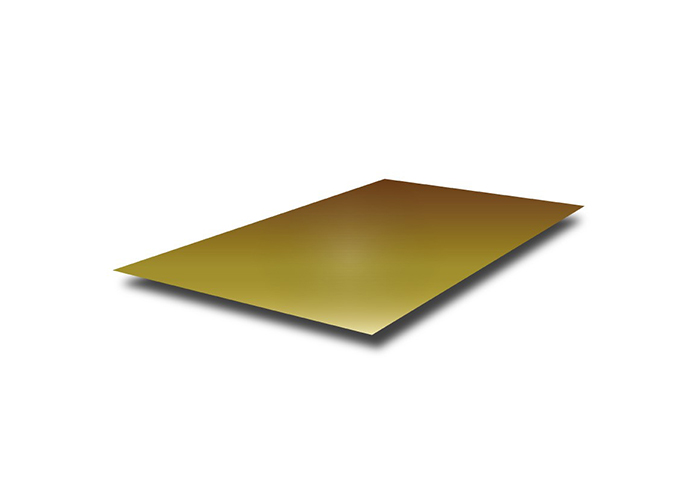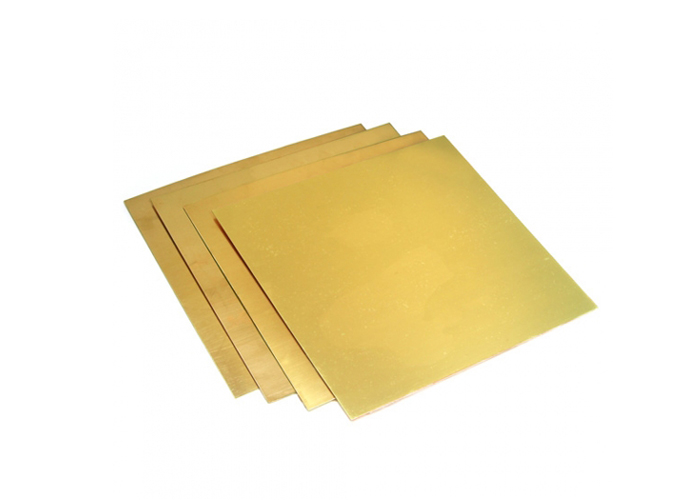Brass alloys have several desirable qualities and they are relatively easy to produce, so brass is a very popular metal alloy for products and applications in several industries. From door knobs to pipe fittings, brass of one kind or another can be found in most commercial and residential buildings. Brass alloys are also commonly used in electronic devices like watches because they are non-magnetic.


Grade Chart | |||||
China | International Standard | United States | Japan | United Kingdom | Germany |
H59 | CuZn41 | C28000 | C2800 | CZ109 | CuZn39 |
H62 | CuZn38 | C27400 | C2740 | CuZn40 | |
H65 | CuZn35 | C26800 | C2680 | CZ107 | CuZn36 |
H68 | CuZn32 | C26000 | C2600 | CuZn33 | |
H70 | CuZn30 | C26000 | C2600 | CZ106 | CuZn30 |
H80 | CuZn20 | C24000 | C2400 | CZ103 | CuZn20 |
H85 | CuZn15 | C23000 | C2300 | CZ102 | CuZn15 |
H90 | C22000 | C2200 | CZ101 | CuZn10 | |
H96 | CuZn4 | C21000 | C2100 | CZ125 | CuZn5 |
Chemical Composition | ||||||
Alloy | Cu | Fe | Pb | Ni | Zn | Impurities |
H59 | 57.0-60.0 | 0.3 | 0.5 | 0.5 | Rest | 1 |
H62 | 60.5-63.5 | 0.15 | 0.08 | 0.5 | Rest | 0.5 |
H65 | 63.5-68.0 | 0.1 | 0.03 | 0.5 | Rest | 0.3 |
H68 | 67.0-70.0 | 0.1 | 0.03 | 0.5 | Rest | 0.3 |
H70 | 68.5-71.5 | 0.1 | 0.03 | 0.5 | Rest | 0.3 |
H80 | 79.0-81.0 | 0.1 | 0.03 | 0.5 | Rest | 0.3 |
H85 | 84.0-86.0 | 0.1 | 0.03 | 0.5 | Rest | 0.3 |
H90 | 88.0-91.0 | 0.1 | 0.03 | 0.5 | Rest | 0.2 |
H96 | 95.0-97.0 | 0.1 | 0.03 | 0.5 | Rest | 0.2 |
Mechanical Properties | |||||||||||
Alloy | Melting Temperature /℃ | Boiling Point /℃ | Density /kg·(kg·mˉ3) | Specific Heat Capacity /J·(kg·℃)ˉ1 | Linear Expansion Coefficient | Thermal Conductivity /W·(m·K)ˉ1 | Conductivity /%IACS | Conductivity /%IACS | Resistivity /μΩ·m | ||
Liquid Temperature | Solidus Temperature | Solid State | Liquid State | ||||||||
H59 | 896 | 886 | 8400 | 21.0X10ˉ6 | 125.1 | 0.0025 | |||||
H62 | 906 | 899 | 8430 | 20.6X10ˉ6 | 116.7 | 27 | 0.071 | 0.0017 | |||
H65 | 936 | 906 | 8470 | 20.1X10ˉ6 | 116.7 | 27 | 0.067 | ||||
H68 | 939 | 910 | 8500 | 20.0X10ˉ6 | 116.7 | 27 | 0.064 | 0.0015 | |||
H70 | 951 | 916 | 1150 | 8530 | 0.09 | 19.9X10ˉ6 | 120.9 | 28 | 0.062 | 0.39 | 0.0015 |
H75 | 981.2 | 8630 | 19.6X10ˉ6 | 120.9 | 30 | 0.057 | |||||
H80 | 1001.2 | 966 | 1240 | 8660 | 0.093 | 19.1X10ˉ6 | 141.7 | 32 | 0.054 | 0.33 | 0.0015 |
H85 | 1026.3 | 991 | 1300 | 8750 | 0.095 | 18.7X10ˉ6 | 151.7 | 37 | 0.047 | 0.29 | 0.0016 |
H90 | 1046.4 | 1026.3 | 1400 | 8800 | 0.095 | 18.4X10ˉ6 | 187.6 | 44 | 0.04 | 0.27 | 0.0018 |
H96 | 1071.4 | 1056.4 | 1600 | 8850 | 0.093 | 18.0X10ˉ6 | 243.9 | 57 | 0.031 | 0.24 | 0.0027 |
Brass sheets and plates are used in applications where a light, strong sheet or plate of metal is needed. These can be manufactured and cut in many different shapes and sizes.
Brass is a mixture of copper and zinc, which has a harder finish than copper alone. We supply brass to customers for a variety of applications due to its durability and looks. Brass is a solid material, making it strong, hard, and formable. Brass exhibits many of the physical properties of pure copper and is also recyclable. Typically, brass is comprised of 67% copper and 33% zinc. Generally, the more zinc, the lighter the color of the brass. Though zinc will always be the second most prevalent metal in brass, the addition of other metals such as tin, arsenic, iron and antimony are commonly included to further improve the physical and mechanical properties of the alloy.
1. Standard Exporting package.
2. Original package or neutral package.
3. According to clients ' needs.
4. Shipped in10-35 days after payment.
